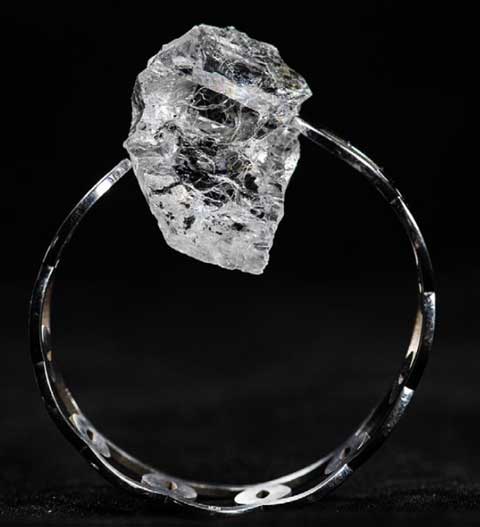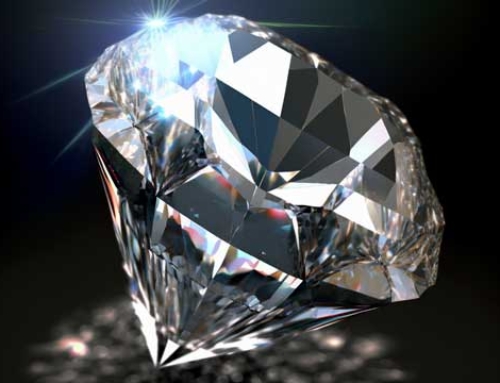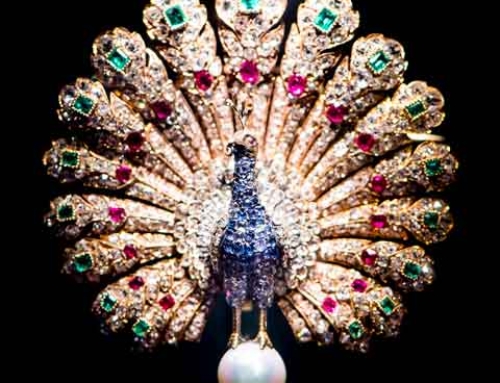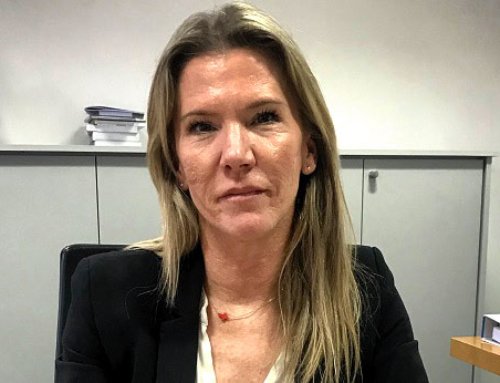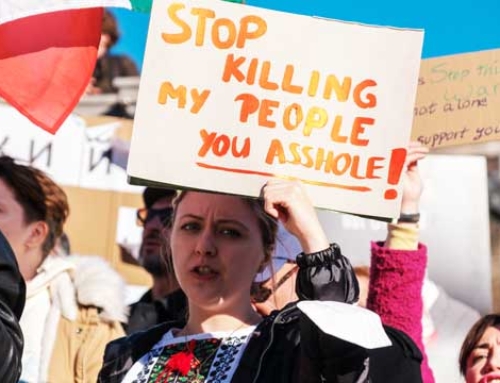Image: HB Antwerp – Instagram
“Diamonds used to be nameless, with us they get their own DNA and everyone can follow their journey in the metaverse.” Diamond and tech company HB Antwerp’s quantum shift is catching on: in two years, they were able to hire 120 people and the biggest fashion houses, ranging from Louis Vuitton to Dior, want to work with them.
The four founders of HB Antwerp started their adventure in the early 2020s. They wanted to control the entire chain of mining from rough stone to finished diamond. Traditionally, this involves a lot of players and there is hardly any connection between the community that owns the mine, the miner, polisher, retailer and consumer.
Antwerp roots
HB Antwerp wanted to change that. They anchored the production, the polishing itself, in Antwerp and did not outsource it to India as is usually done nowadays.
If you visit them in their workshop located in Antwerp’s Hoveniersstraat, in the heart of the Diamond Quarter, walking there, you’ll see half the world passing by, along with patrolling policemen and high-security armored cars bringing diamonds in and out. Most of the workshops that still exist are sealed off from the outside world, for security, but also out of secrecy. The value of the stones located there, therefore, captures the imagination.
HB Antwerp also wants to break through that rather closed image. Whoever enters the entrance hall of their office imagines himself, so to speak, inside a diamond. “Designed by the set designers of Tomorrowland,” laughs Margaux Donckier, Public Affairs Director of HB Antwerp, as she guides us past secured glass doors that open with her palm print. As we pass the workshops, we see spaces with lots of glass and light that look nothing like the clinically white corridors with heavy doors in the rest of the building.
“Everything you see here fits into our story and our mission,” Shai de Toledo, one of the three founders, tells us a little later over a steaming bowl of soup. “With that, we want to celebrate these special minerals that are millions of years old, older even than the dinosaurs. Our mission starts here in Antwerp. We have claimed the city’s name, just as the fashion industry did, because we don’t want to go along with the narrative that everything here is too expensive or too slow, or that there would be too little talent. Five hundred years ago Antwerp was the center of the world, in a lot of countries we are still perceived that way.”
Transparency
“But if you want to operate and produce from here, you have to be able to strongly differentiate yourself from the rest of the world. For us, it was pretty clear early on that this would be a story of transparency where we want to restore the connection between the origin of the rough diamond and the ultimate consumer.”
HB Antwerp does this through blockchain technology, a kind of digital registry that records every step in the stone’s life cycle. The technology was developed in collaboration with Microsoft. “What we record can really be about anything, down to the smallest millimeter of dust found on the diamond,” laughs Shai. “Who mines the rough diamond, how long it’s been on the road, what potential it has, who researched or polished it, who the ultimate buyer is. That’s how we create a community, an ecosystem around the diamond, where everyone involved with the stone is connected to each other. That allows us to return a piece of the profits to the country of origin.”
That country of origin for the vast majority of their stones is Botswana. Through a contract with Canadian mining company Lucara Diamond, HB has exclusive access to a mine in Botswana for stones over 10 carats. Says Shai de Toledo, “We chose Botswana because the country is stable, has a good health system, no corruption and many well-educated people. Since our contract, 80% more revenue flowed back to the local government, thanks to blockchain.”
To make the link with the country of origin tangible, HB Antwerp launched “Signum,” a platform where whoever buys a rough diamond automatically gets a digital twin – “digital twin” – of the stone in the metaverse. This is the next powerful version of the Internet in which virtual spaces such as Fortnite and Roblox are linked together and where, thanks to augmented reality, you can also experience and do things yourself.
Margaux Donckier: “At the end of last year, as an experiment, we already launched some digital diamonds with NFTs (digital ownership certificates) without a physical twin. In just three minutes they were sold for 6,100 euros each. So it worked. From now on, though, we will only create digital twins which a physical diamond is also linked to.”
Shai de Toledo adds: “For consumers, this opens up a whole new world. Those who buy a rough diamond often do so as an investment to put away in a vault until, for example, they want to get married and have a diamond cut from it. In the virtual world, there are many more opportunities to safely show off the stone. You can even make it your avatar.”
High-tech
What the blockchain is all about soon becomes clear when we take a tour of the workshops. In the first, a lady examines a rough diamond with an MRI scanner. The adjacent computer screen shows possible shapes of stones that could be extracted. We take a step back when Margaux tells us that this is the third largest diamond ever, no less than 1,175 carats (235 grams).
In the next room, researchers use a CT scan to look at the inside of a diamond to record where there are blemishes or inclusions. One of these – with a little imagination – is shaped like a leopard. “Such a peculiarity comes into the blockchain, it is part of the story and the DNA of the stone,” says Margaux. “Especially in the metaverse, this will increase its value.”
In subsequent stages, we see the stones getting smaller and finer. High-tech machines that HB Antwerp itself had developed can sharpen the stones precisely. Nevertheless, there are still a lot of professional grinders diligently at work as well. “Machines cannot replace the human eye. That corrects where machines cannot. Diamond polishing is and will always be a craft, an art. And also: it is a luxury product. You don’t want that created by machines alone, do you?” laughs Margaux.
People
Most of the polishers who work at HB Antwerp are trained at their own “HB Academy. “We couldn’t do otherwise, because diamond polishers without jobs are not up for grabs,” he says. HB therefore cooperates with the VDAB, among others, which directs people toward training. Who qualifies? Margaux: “We are looking for highly motivated people, who can concentrate well and are also perfectionists. After a three-month training, they can join us with a mentor beside them. It’s a hugely diverse crowd, who generally get a lot of satisfaction from the job.”
“That’s because they are part of the ecosystem. In the blockchain, we also record who and how long they worked on the stone,” Shai adds. “That way they belong to the story and are seen as real artists.”
Unlike what you might expect at a diamond company, at HB Antwerp you see a lot of young people walking around with highly educated, technological and digital profiles such as economists, data analysts and digital developers. Among other things, they streamline the story of blockchain and digital twins in the metaverse. “Again, this is where our mission comes in handy. Because the story we tell in it – about transparency, sustainability and responsibility using the virtual world – appeals to that young generation. Perhaps when they started their studies they never thought they would end up in the diamond world, but with us they find the appropriate challenges. The same goes for our customers by the way, thanks to the digital twins we can reach a completely different audience than the traditional diamond lovers.”
HB Antwerp is also investing in training in Botswana, with the HB Innovation Lab. “The idea is to open a second hub in Botswana that mirrors our workshop and office here. Through the HB Innovation Lab, we are training local people for this who will perform the same tasks as we do here in Antwerp. Among other things, we are developing skills such as leadership, innovation and entrepreneurship. The interest is enormous. For the next edition of this Innovation Lab, we are organizing a hackaton to select the best.”
To conclude
Finally, a last question. Suppose you are in possession of a rough diamond from HB Antwerp, and thus its digital twin, and it is stolen in the “real” world. What happens then? Shai de Toledo: “From the moment we no longer know where a stone is located, and thus it has left our ecosystem, it loses its value, and so does the digital twin. Should it ever resurface – and stolen stones usually do – it will always be recognizable thanks to our blockchain, even if only half or a fraction of the stone remains. It’s like your own child, you will always continue to recognize it, under whatever circumstances.“


